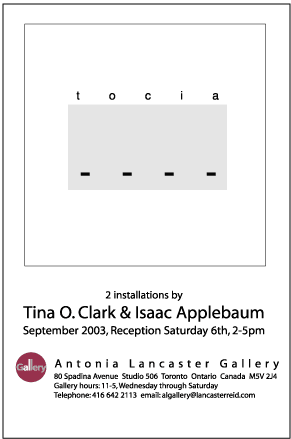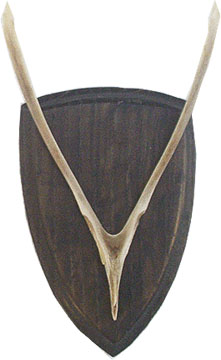 |  | ||||
| |||||
T O C I A
2 installations by Tina O. Clark & Isaac Applebaum  PRESS RELEASE FOR T O C I A Antonia Lancaster Gallery presents the September show t o c i a WISHBONE HISTORY Two people, making several wishes, tug on opposite ends of the dried, v-shaped clavicle of a fowl. For the person who breaks off the larger piece, a wish comes true. The custom is at least 2,400 years old, and it originated with the Etruscans, the ancient people who occupied the area of the Italian peninsula between the Tiber and Arno rivers, west and south of the Apennines. People would draw a circle in the sand and divide it into 24 segments, the number of the alphabet of the time. Grain would be placed into the segments and a chicken placed in the middle of the circle. A question would be asked, and the bird would pick the beginning letter of the answer. (“What shall be the name of my child?”) | |||||
 |  | ||||
 |  | ||||
 |  | ||||
 |  | ||||
 |  | ||||
 |  | ||||
